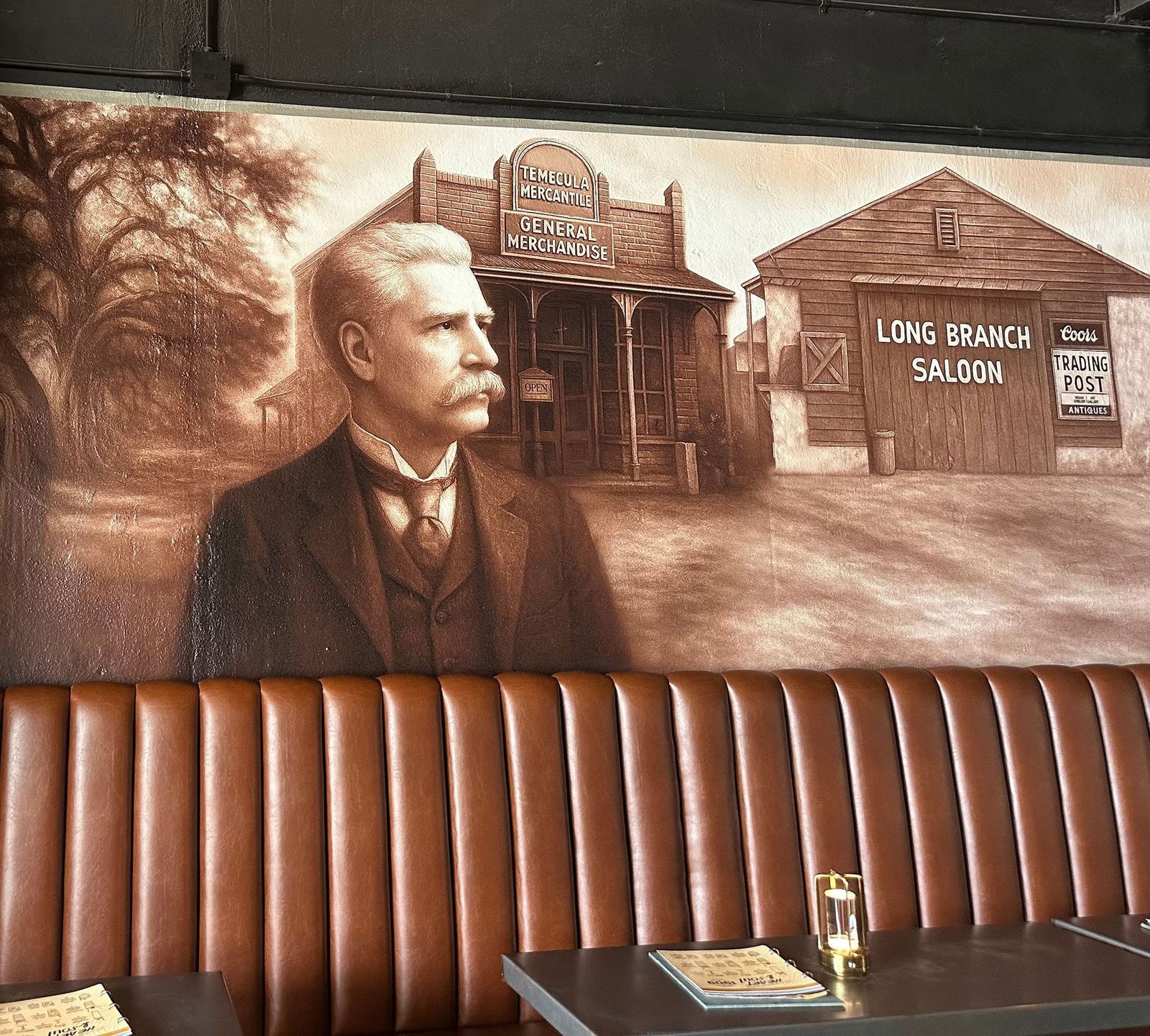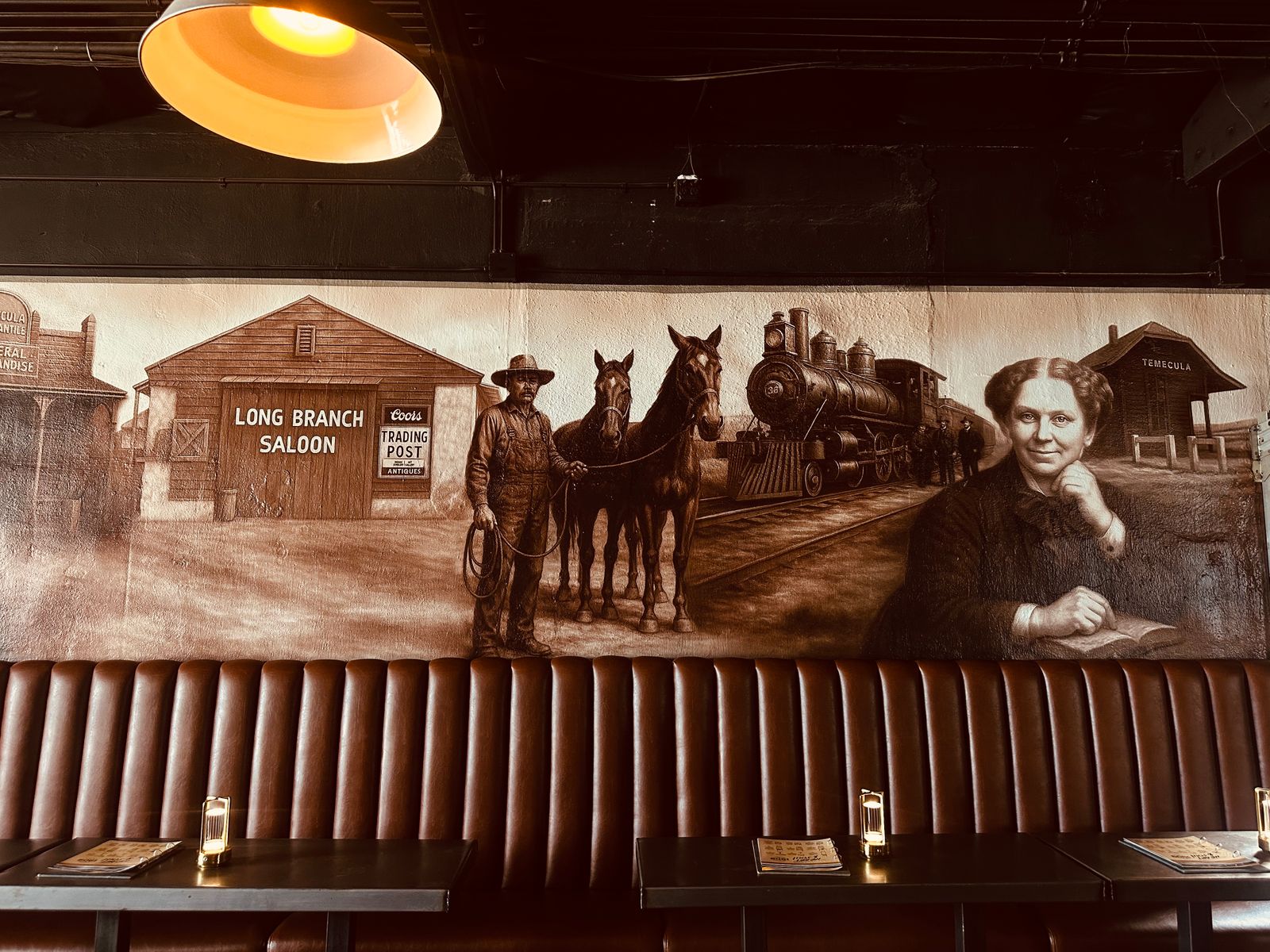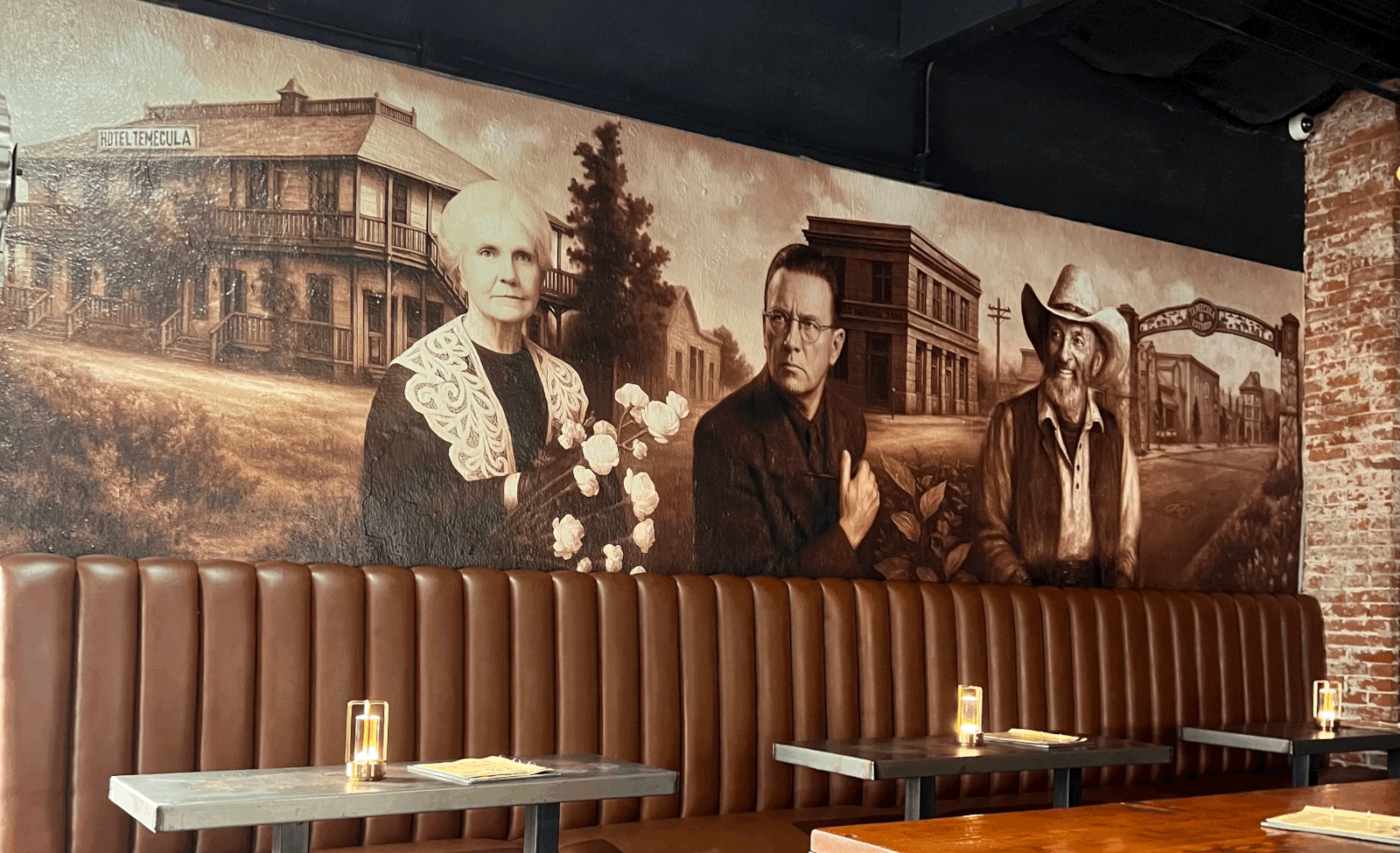Mural



With our remodel at 1909 Temecula, we’ve added a touch of history to our design—capturing the story of the valley through a mural that unfolds across time. As your eyes move from left to right, the artwork reveals the people, places, and moments that built Temecula into what it is today.
It begins with the Great Oak, or Wi’áaşal, a sacred tree on the Pechanga Reservation that is over 1,000 years old and among the oldest living oaks in the western United States. The Pechanga reservation, where the tree lies, is home to the Pechanga Band of Luiseño Indians, whose people have lived in the Temecula Valley for more than 10,000 years.
From there, the mural moves into the late 19th century with the Mercantile Building. Built in the 1890s by Philip Pohlman as Temecula’s first brick building, it still endures today as the preserved entry to the Temecula Community Theater. Just beyond stands Walter Vail, the rancher who consolidated vast lands and helped shape Temecula’s cattle economy.
At the mural’s center is the story of our own building—1909 Temecula. Shown here as the Long Branch Saloon, this structure has lived many lives: the Mission/Machado Store, a church, a saloon, and more. Rebuilt in 1909 after a fire, it still carries that history today. The mural also honors Macedonio “Mac” Machado, who opened the Machado Store here in 1909, anchoring commerce on Front Street and giving the building its enduring roots.
Continuing right, you’ll see the California Southern Railroad train and Temecula Depot, reminders of how the railroad’s arrival in 1882 fixed the town’s location and fueled its early growth. Next is Helen Hunt Jackson, who visited Temecula in 1882 and drew inspiration for her famous novel Ramona (1884). Her work brought national attention to Native struggles and forever tied Temecula to the cultural memory of Southern California’s past, recalled through places like the Ramona Inn.
Further along rises the Hotel Temecula, rebuilt in 1891 after fire and operated by R.J. and Mary Jane Welty (pictured) for more than 30 years, a hub of Old Town life that still welcomes guests today. Near it stands writer Erle Stanley Gardner, creator of Perry Mason, who lived on a Temecula ranch from 1937 to 1970 and became one of the city’s most storied residents.
On the far right, the First National Bank of Temecula, completed in 1913 and opened in 1914, still stands as one of Old Town’s original commercial buildings, with its solid vault intact. The mural closes with Bob Morris, the artist and builder who gave Old Town its signature Western look, including the arches at both ends of Front Street that welcome visitors today.
Together, these images honor the people, places, and moments that shaped Temecula—reminding us that our story is rooted in history, but always growing into the future
**Historical information for this mural has been compiled from city archives, tribal history, and published works. A full list of sources can be found below. And a huge thank you for all of the help we have received from the Temecula Valley Museum staff.**
https://www.pechanga-nsn.gov/index.php/history?
https://www.pechanga-nsn.gov/index.php/history/the-great-oak?
https://temeculaca.gov/187/Mercantile-Building?
https://www.temeculahistoricalsociety.org/html1/The_Vails.html?utm
https://temeculaca.gov/190/Machado-Store
https://temeculaca.gov/161/Temecula-Railroad?.com
https://temeculaca.gov/1644/Women-in-Temecula-History?
https://temeculaca.gov/191/Hotel-Temecula-Welty-Hotel?
https://temeculaca.gov/160/Erle-Stanley-Gardner?
https://www.vailranch.org/html3/03_First_National_Bank.html?
https://www.visittemeculavalley.com/blog/post/oldtown-walking-tour/?
